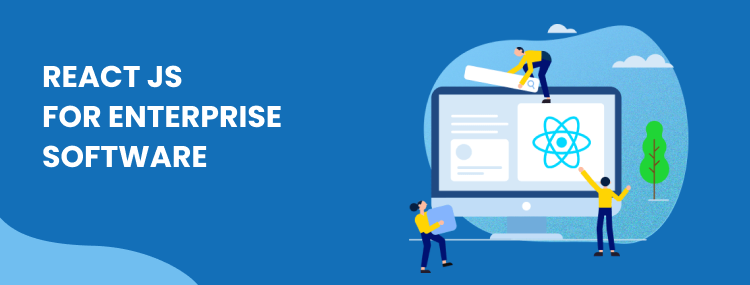In the rapidly evolving landscape of enterprise software development, staying ahead of the curve is crucial for businesses to thrive. React JS, a powerful JavaScript library, has emerged as a game-changer in the realm of web application development. In this comprehensive guide, we will explore how React JS can revolutionize enterprise software development, empowering businesses with cutting-edge solutions.
React JS offers a plethora of benefits when it comes to building enterprise software. Its modular and component-based architecture allows for reusability, scalability, and maintainability, making it ideal for large-scale projects. The virtual DOM (Document Object Model) in React JS optimizes rendering performance, ensuring a smooth and responsive user experience even in complex applications.
One of the key advantages of React JS for enterprise software lies in its ability to deliver rich and interactive user interfaces. With React’s declarative syntax, developers can efficiently build complex UI components, manage state effortlessly, and handle data flow efficiently. This enables enterprises to create visually appealing and intuitive software interfaces that enhance user engagement and productivity.
React JS also promotes code efficiency and collaboration in enterprise software development. Its component-based approach allows developers to encapsulate functionalities and reuse them throughout the application. This modularization streamlines development, accelerates the time to market, and facilitates collaboration among team members. Additionally, React’s vibrant and active community ensures access to a vast ecosystem of libraries, tools, and resources, further boosting productivity and development speed.
To harness the power of React JS effectively for enterprise software development, certain best practices should be followed. Firstly, adopt a modular approach by breaking down the application into reusable components. This not only enhances code maintainability but also enables faster development and easier debugging.
Additionally, embrace the concept of a single source of truth by using React’s state management tools, such as Redux or React Context API. Centralizing the application’s state ensures consistency and simplifies data management across different components and screens.
Furthermore, leverage React’s performance optimization techniques to ensure optimal rendering and responsiveness. Techniques like lazy loading, code splitting, and memoization can significantly improve the performance of enterprise software, particularly in scenarios where large datasets or complex UI components are involved.
Moreover, incorporate automated testing into your development workflow. React JS provides robust testing libraries like Jest and React Testing Library, enabling developers to write comprehensive unit tests, integration tests, and end-to-end tests. Implementing test-driven development practices ensures the stability and reliability of your enterprise software solutions.
In conclusion, React JS is a formidable tool for enterprises looking to build cutting-edge software solutions. Its modular and component-based architecture, coupled with efficient rendering and state management, make it an ideal choice for enterprise-grade applications. By following best practices and leveraging React’s rich ecosystem, businesses can unlock the true potential of React JS and deliver software solutions that are scalable, performant, and user-friendly. Stay at the forefront of enterprise software development by embracing React JS and driving innovation in your organization.



